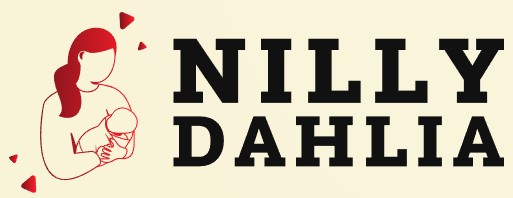How Can You Create Adorable Baby Clothes at Home?
Creating baby clothes is not just a practical endeavor; it’s a heartfelt journey into the world of creativity and care. Whether you’re a seasoned seamstress or a curious beginner, making your own baby garments allows you to infuse each piece with love, personality, and a touch of uniqueness. From selecting the softest fabrics to choosing adorable patterns, the process of crafting clothing for little ones can be immensely rewarding. In this article, we’ll explore the delightful art of making baby clothes, providing you with tips, techniques, and inspiration to get started on your sewing adventure.
As you embark on this charming project, it’s essential to understand the basics of baby clothing design. Baby clothes must not only be cute but also comfortable and practical, taking into account the delicate skin and active movements of infants. We’ll delve into the various types of fabrics that are safe and suitable for babies, as well as the importance of choosing the right patterns that allow for ease of dressing and diaper changes.
Moreover, we’ll touch on the tools and supplies you’ll need to kick off your sewing journey, ensuring that you’re well-equipped to bring your creative visions to life. With a little guidance and inspiration, you’ll soon find yourself crafting adorable outfits that celebrate the joy of new
Choosing the Right Fabric
Selecting the appropriate fabric is crucial for making baby clothes, as infants have sensitive skin and require materials that are soft, breathable, and safe. Consider the following fabric options:
- Cotton: Soft, breathable, and easy to wash. Organic cotton is even better as it is free from harmful chemicals.
- Bamboo: Naturally hypoallergenic, moisture-wicking, and has antibacterial properties.
- Fleece: Ideal for colder climates, offering warmth and comfort.
- Knits: Stretchy and accommodating for movement, making them perfect for onesies and leggings.
When choosing fabric, always check for any added dyes or finishes that may irritate a baby’s skin. Pre-washing fabrics is also recommended to prevent shrinkage and remove any residues.
Essential Tools and Supplies
Before starting your sewing project, gather the necessary tools and supplies to ensure a smooth process. Here’s a list of essentials:
- Sewing Machine: A basic machine with straight and zigzag stitches is sufficient.
- Fabric Scissors: Sharp scissors specifically for fabric will ensure clean cuts.
- Measuring Tools: A measuring tape and ruler for precise measurements.
- Pins and Clips: To hold fabric pieces together while sewing.
- Thread: Choose a strong, durable thread that matches your fabric.
- Pattern Paper: For drafting your designs, if not using pre-made patterns.
| Tool | Purpose |
|---|---|
| Sewing Machine | For stitching fabric pieces together |
| Fabric Scissors | For cutting fabric accurately |
| Measuring Tape | For taking precise measurements |
| Thread | For securing seams |
Taking Accurate Measurements
Accurate measurements are vital for creating well-fitting baby clothes. Here are the key measurements to take:
- Chest: Measure around the fullest part of the chest.
- Waist: Measure around the natural waistline.
- Hip: Measure around the fullest part of the hips.
- Inseam: Measure from the top of the inner thigh to the ankle.
- Length: Measure from the shoulder to the desired hemline.
Using these measurements, you can refer to size charts specific to baby clothing to determine the appropriate sizes for your patterns.
Creating Patterns
You can either buy commercial patterns or create your own. When creating patterns, consider the following steps:
- Select a Style: Decide on the type of clothing you want to make (e.g., onesie, dress, pants).
- Draft the Pattern: Use pattern paper to sketch your design based on the measurements taken.
- Add Seam Allowances: Include an extra ¼ to ½ inch around the edges for seams.
- Cut Out the Pattern: Carefully cut out the pattern pieces from the pattern paper.
If you’re using a commercial pattern, follow the instructions provided for cutting and sewing.
Sewing Techniques for Baby Clothes
Sewing baby clothes requires attention to detail and specific techniques to ensure comfort and safety:
- French Seams: These seams encase raw edges, reducing the risk of irritation.
- Zigzag Stitching: Use zigzag stitches on knit fabrics to maintain stretch.
- Snap Fasteners: Instead of buttons, consider snap fasteners for ease of dressing and safety.
- Bias Tape: Use bias tape to finish edges and create a polished look.
By employing these techniques, you will create durable and comfortable baby clothing that can withstand frequent washing and wear.
Choosing the Right Materials
Selecting suitable fabrics is crucial when making baby clothes. The skin of infants is sensitive, so you must choose soft, breathable, and non-irritating materials.
- Cotton: Soft, breathable, and hypoallergenic. Ideal for everyday wear.
- Bamboo: Natural, biodegradable, and extremely soft. Offers excellent moisture-wicking properties.
- Flannel: Warm and cozy, suitable for sleepwear.
- Knit fabrics: Stretchy, allowing for ease of movement. Great for onesies and leggings.
Consider the following factors when choosing materials:
| Factor | Consideration |
|---|---|
| Safety | Ensure materials are free from harmful chemicals. |
| Breathability | Fabrics should allow air circulation to prevent overheating. |
| Ease of Care | Machine washable materials simplify laundry. |
Basic Sewing Techniques
Familiarity with essential sewing techniques is important for creating durable and well-fitted baby clothes. Here are some techniques to master:
- Straight Stitch: The most basic stitch used for seams.
- Zigzag Stitch: Useful for finishing edges and preventing fraying.
- Hemming: A technique to finish raw edges for a clean look.
- Gathering: Creates ruffles or fullness in garments.
To practice, start with simple projects such as bibs or burp cloths before advancing to more complex items like dresses or rompers.
Essential Tools and Equipment
Having the right tools makes the sewing process smoother and more enjoyable. Here’s a list of essential tools:
- Sewing Machine: A reliable machine suited for various fabrics.
- Fabric Scissors: Sharp scissors specifically for cutting fabric.
- Measuring Tape: For accurate measurements.
- Pins and Clips: To hold fabric pieces together before sewing.
- Iron: For pressing seams and finishing garments.
Consider investing in a rotary cutter and mat for precise cutting, especially for larger pieces.
Basic Patterns and Designs
Choosing the right patterns is essential for creating functional and stylish baby clothes. Many patterns are available for beginners.
- Onesies: Easy to sew and can be customized with snaps or buttons.
- Pajamas: Simple patterns with an elastic waistband for comfort.
- Dresses: A-line shapes are easy to construct and allow for growth.
- Hats and Booties: Quick projects that make great gifts.
Patterns can be found in sewing books, online, or you can create your own using basic shapes.
Finishing Touches
Adding finishing touches enhances the overall quality and appeal of baby clothes. Consider the following:
- Labels: Custom labels can give a professional touch.
- Embellishments: Use appliqués, embroidery, or fabric paint to personalize.
- Snaps and Zippers: Ensure they are securely attached and safe for infants.
- Pre-washing Fabric: Always pre-wash fabrics to prevent shrinking and remove any chemicals.
Regularly inspect finished garments for any loose threads or potential hazards.
Expert Insights on Crafting Baby Clothes
Emily Carter (Fashion Designer, Little Sprouts Apparel). “When making baby clothes, it is crucial to choose soft, breathable fabrics like cotton or bamboo. These materials ensure comfort for the baby’s sensitive skin and allow for easy movement, which is essential during their early developmental stages.”
Dr. Lisa Tran (Pediatric Dermatologist, Healthy Skin Clinic). “Safety should be a top priority when creating baby clothing. Avoid using buttons, zippers, or any small embellishments that could pose a choking hazard. Instead, opt for snap closures or stretchy necklines for ease of dressing and undressing.”
Michael Johnson (Sustainable Textile Expert, EcoFashion Institute). “Incorporating sustainable practices into baby clothing production is not only beneficial for the environment but also for the health of the child. Use organic fabrics and non-toxic dyes to minimize exposure to harmful chemicals, promoting a safer wardrobe for infants.”
Frequently Asked Questions (FAQs)
What materials are best for making baby clothes?
Cotton, bamboo, and linen are ideal materials for baby clothes due to their softness, breathability, and hypoallergenic properties. Organic fabrics are also recommended to minimize exposure to harmful chemicals.
What sewing techniques should I use for baby clothes?
Utilize techniques such as French seams and bias binding to prevent fraying and ensure comfort. Additionally, consider using elastic for waistbands and cuffs to allow for flexibility and ease of dressing.
How do I choose the right size for baby clothes?
Refer to standard baby size charts, which typically include measurements for age, height, and weight. It is advisable to make clothes slightly larger to accommodate growth and ensure comfort.
What safety considerations should I keep in mind when making baby clothes?
Avoid using small buttons, embellishments, or any items that could pose a choking hazard. Ensure seams are smooth and free of rough edges to prevent irritation.
Can I customize baby clothes with designs or patterns?
Yes, customizing baby clothes with fabric paint, embroidery, or appliqué can add a personal touch. Ensure that any added designs are securely attached and safe for the baby.
How do I care for homemade baby clothes?
Wash baby clothes in gentle detergent and avoid fabric softeners to maintain fabric integrity. It is advisable to wash items in cold water and tumble dry on low heat to prevent shrinkage.
making baby clothes is a rewarding and creative endeavor that allows parents and caregivers to provide personalized garments for their little ones. The process begins with selecting the right fabric, which should be soft, breathable, and safe for a baby’s sensitive skin. Cotton and jersey knit are popular choices due to their comfort and ease of care. Understanding basic sewing techniques and patterns is essential for creating well-fitted and durable clothing items.
Additionally, it is important to consider the practicality of the designs. Baby clothes should be easy to put on and take off, with features such as snap closures or stretchy necklines. Incorporating elements like adjustable hems or expandable features can also extend the life of the garments as the baby grows. By choosing simple patterns and employing efficient sewing methods, even beginners can successfully craft beautiful and functional baby clothes.
Lastly, personalizing baby clothes with unique embellishments, such as embroidery or fabric appliqués, can add a special touch. This not only enhances the aesthetic appeal but also creates cherished keepsakes that can be treasured over the years. Overall, making baby clothes combines creativity with practicality, resulting in delightful outfits that reflect the love and care invested in their creation.
Author Profile

Latest entries
- April 12, 2025Clothing & ComfortHow Can You Effectively Remove Old Stains from Baby Clothes?
- April 12, 2025Family & RelationshipsCan You Be Single and Still Make a Difference as a Foster Parent?
- April 12, 2025Family & RelationshipsDoes Signing Over Parental Rights Really End Child Support Obligations?
- April 12, 2025Family & RelationshipsCan You Join the Military at 16 with Parental Consent? Exploring Your Options!
